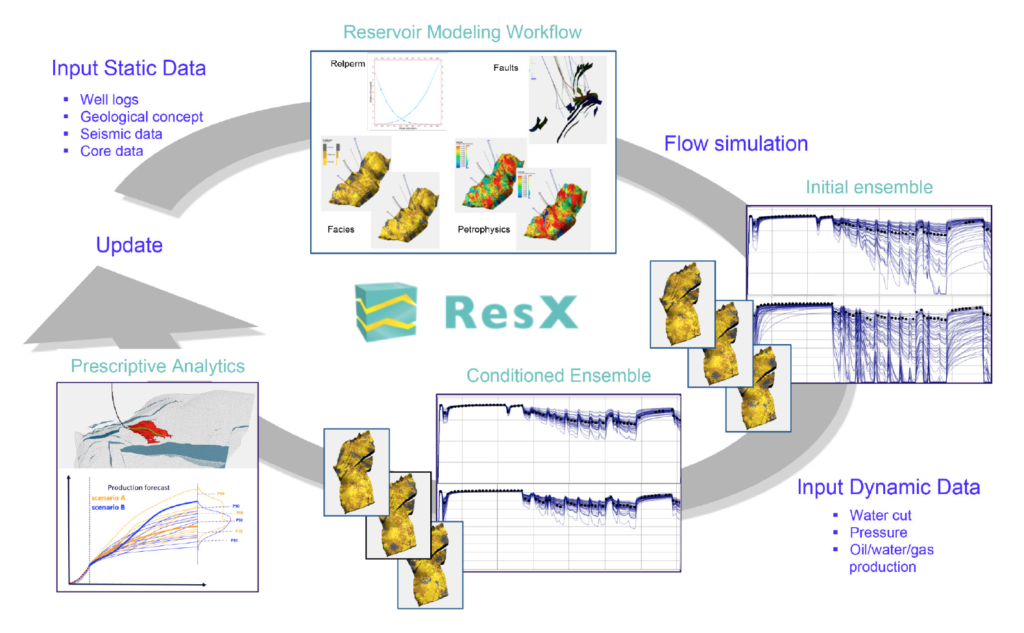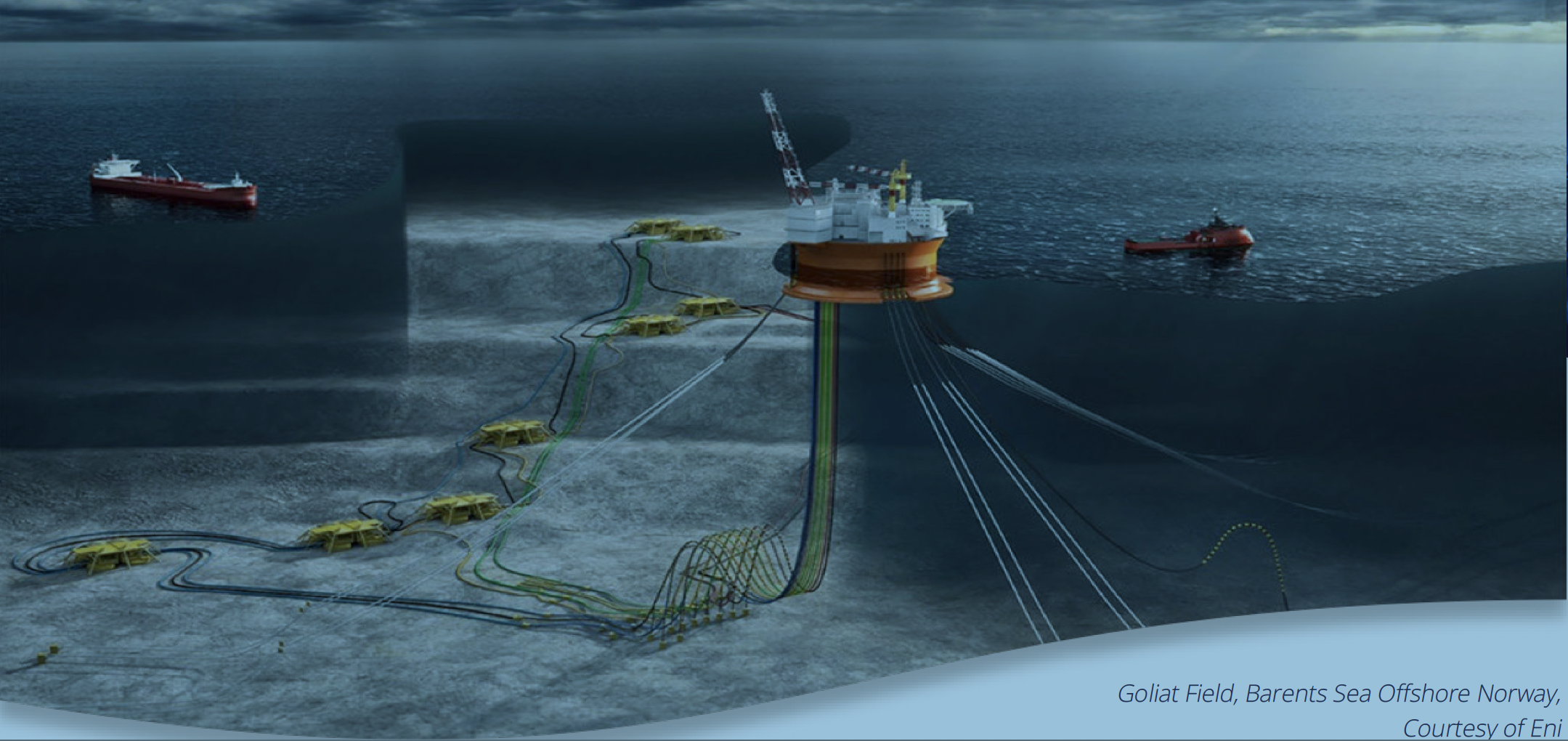Objective
Identify and evaluate infill well targets in the Barents Sea Goliat Field
Solution
Integrate data, models and asset team insights into a repeatable workflow using a multidisciplinary reservoir modelling and management solutions
Outcomes
- Streamlined reservoir modeling and data integration
- Improved subsurface understanding and increased collaboration
- Reduced time spent on planning and updating reservoir models
Project Description
The siloed effect
The concept of closed loop reservoir management has been discussed in the literature for decades, yet the traditional approach persists in treating static and dynamic modeling as separate tasks with asset teams continuing to work in domain siloes. This not only increases the time to build a single model but also results in models that might perfectly match the current dynamic data but completely fail to honor the input data and the geological concept. In addition, uncertainty studies are often done in the static domain without being shaped by the information from dynamic data. This increases the risk that key uncertainties are overlooked and reservoir performance is suboptimal.
ResX collaboration solution
Using the ResX tool, integrated reservoir modelling workflows were established. The solution combines data (both static and dynamic), the subsurface know-how of the asset team, reservoir physics, and fit-for-purpose machine learning algorithms to generate a full ensemble of reservoir models that capture subsurface uncertainty. The solution enables frequent model updates when new data arrives, and an automated workflow assists in analyzing results for management decisions.

Solution Highlights
Reservoir modelling and data conditioning were carried out in a single step with multidisciplinary engagement forming a streamlined process that could be run on a continuous basis through repeatable workflows.
- An efficient model updating workflow facilitated a systematic analysis of the ensemble and the evaluation of lookahead development options (e.g. where to drill infill wells, what changes to operational strategies, etc.)
- Reservoir management strategies were explored to maximize the field potential.
- An ensemble based modelling approach at the Goliat field demonstrated how computer power, data, and subsurface team expertise can be brought together to improve reservoir understanding in a fraction of the time needed with traditional tools and approaches. Automatically create infill wells within the identified targets, taking physical constraints such as dogleg severity into account.
Asset highlights
References
For more details check out the April 2017 JPT article, “Integrated Software Tool Brings Speed, Reliability to Reservoir Modeling on Barents Sea Project”
Image: Goliat Field, Barents Sea, Offshore Norway
